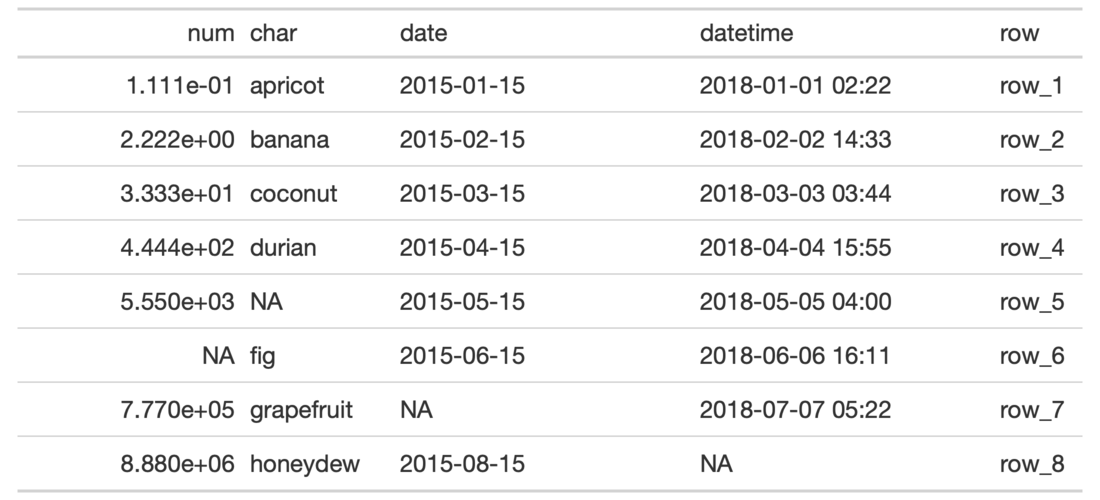Manual specifications of column widths can be performed using the
cols_width() function. We choose which columns get specific widths (in
pixels, usually by use of the px() helper function). Width assignments are
supplied in ... through two-sided formulas, where the left-hand side
defines the target columns and the right-hand side is a single width value in
pixels.
cols_width(data, ..., .list = list2(...))
Arguments
| data | A table object that is created using the |
|---|---|
| ... | Expressions for the assignment of column widths for the table
columns in |
| .list | Allows for the use of a list as an input alternative to |
Value
An object of class gt_tbl.
Details
Normally, column widths are automatically set to span across the width of the
container (both table and container widths can be individually modified with
the table.width and container.width options within tab_options()). When
using cols_width() though, the table.width option is disregarded in
favor of the pixel values set for each column.
Figures

Function ID
4-2
See also
Other Modify Columns:
cols_align(),
cols_hide(),
cols_label(),
cols_merge_range(),
cols_merge_uncert(),
cols_merge(),
cols_move_to_end(),
cols_move_to_start(),
cols_move()
Examples
# Use `exibble` to create a gt table; # with named arguments in `...`, we # can specify the exact widths for # table columns (using `everything()` # or `TRUE` at the end will capture # all remaining columns) tab_1 <- exibble %>% dplyr::select( num, char, date, datetime, row ) %>% gt() %>% cols_width( vars(num) ~ px(150), ends_with("r") ~ px(100), starts_with("date") ~ px(200), everything() ~ px(60) )